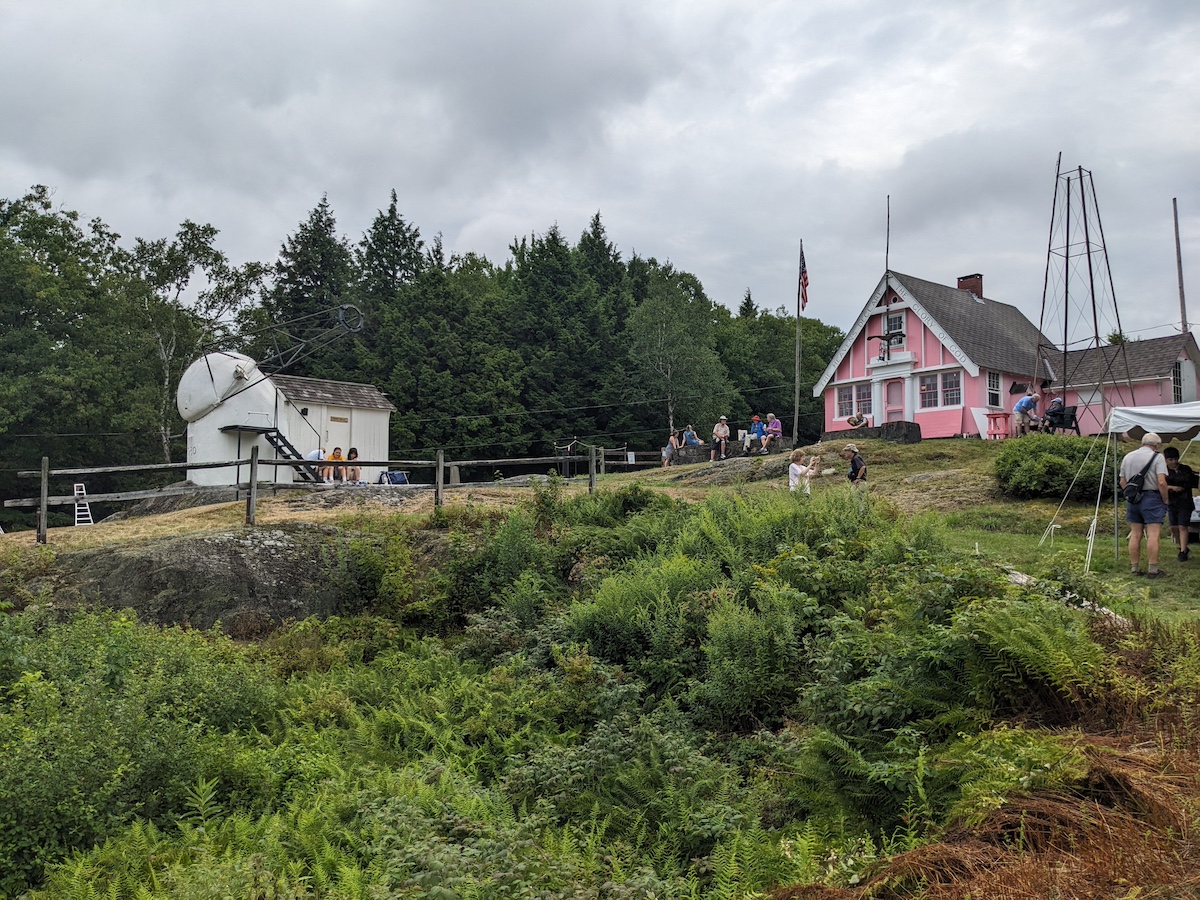
The distinctive pink clubhouse marks its hundredth birthday, and amateur telescope makers continue to flock to the grandfather of astronomy conventions. | By Tim Lyster
It was the summer of 1920 in Southern Vermont. Russel W. Porter, artist, architect, engineer, and former arctic explorer, wanting to share his passion for astronomy, led a telescope-making class for the local townsfolk. Fifteen men and one woman signed up to learn how to grind mirrors and put them in their own self-assembled reflectors.
Three years later, on December 7, 1923, some of those pioneer ATMs (Amateur Telescope Makers) helped launch the Springfield Telescope Makers club. Members began building a clubhouse on the summit of Breezy Hill, about a mile east of Springfield, Vermont. On July 3, 1926, about 20 people attended the inaugural telescope-making pilgrimage originally called Stella Fane (“Star Shrine” in Latin), later known as Stellafane.
Rain Doesn’t Stop Play
This year’s convention took place August 1-4, as the Springfield Telescope Makers celebrated the 100th anniversary of the Stellafane Clubhouse. The event was dedicated to “All Those Who Do Astronomy Outreach,” and while inclement weather confined observing to Thursday night, attendees were treated to a range of programming and activities. Organizers reported “a great selection of speakers, workshops, demonstrations and events for every level: children, beginners, intermediate and advanced amateur astronomers.”
![]() Like this content? Want to see more? Support AAVSO’s day-to-day operational needs with a tax-deductible contribution.
Like this content? Want to see more? Support AAVSO’s day-to-day operational needs with a tax-deductible contribution.
AAVSO participated in Stellafane by hosting a "Pro-Am" session of talks on Friday afternoon. Staff Astronomer Dr. Bert Pablo’s presentation, “AAVSO Support of Supernova Early Warning System,” served as a timely update on the SNEWS Project and described the ways amateurs can contribute to our understanding of supernova progenitors. Board member Mark Munkacsy discussed exoplanets and how amateurs might observe exoplanet transits. Fellow board member Peter Bealo’s talk, “Using the new ‘Small Smart Telescopes’ to Generate Science” explored how owners of these instruments can contribute to our knowledge of the universe. In “A Journey from Grinding Mirrors to Working on Hubble and the Value of Pro-Am Research,” Dr. Mitchell Revalski of the Space Telescope Science Institute described his personal journey from a teenage amateur telescope maker to a professional astronomer.

More than 100 people attended the session, and almost 1,000 participated in Stellafane for the weekend.
The impact of the AAVSO was felt outside its own talks. Saturday’s keynote, “From ATM and Stellafane to Polishing Webb Mirrors,” was presented by Dr. Tony Hull, Adjunct Professor of Astronomy at University of New Mexico. Dr. Hull paid homage to the AAVSO for mentoring him as a teen. And Dr. Kristine Larsen, Distinguished CSU Professor of Earth and Space Sciences at Central Connecticut State University and the co-chair of AAVSO’s Solar Section, gave a Stellafane Shadowgram talk "Stellafane Convention 100 years from now,” and led two astronomy workshops for children.
The 2025 Stellafane Convention will be held July 24-27. ![]()
Additional reporting provided by Peter Bealo.

